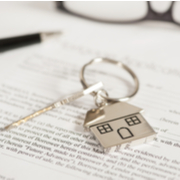Bad credit is a term describing a person who has repeatedly not paid the minimum balance of a loan or on their credit card. For most lending companies, an individual’s current financial situation also is a factor when determining what the loan amount and repayment schedule will be.
Frequently, that person or company will also have a low credit score. In that case, they will find it difficult to borrow money.
Bad credit loans exist for those people. They offer the chance of borrowing even with a low credit score or no credit history, although with higher restrictions and interest rates.
Credit Score Categories
| Credit Rank | Range |
| Excellent | 750 and Above |
| Good | 700-749 |
| Fair | 650-699 |
| Poor | 550-649 |
| Bad | 549 and Below |
Step One: Identify Your Needs
Before you go on to seek a lender who'll lend to you, you must identify why you need a loan. There are many types of loans, and your options will depend on the type you need.
Let's take a brief look at the kinds.
- (Un)Secured personal loans - cover a wide variety of purposes; secured ones come with collateral, while unsecured don't, but have higher interest rates.
- Payday loans - as the name suggests, they are due to your next payday, they are short-term loans with a large interest rate.
- Title loans - you can take it out if you have a car, and borrow 25%-50% of its value.
- Home equity loans - use the home as collateral, and you can typically get up to 85% of the market value.
The Key Differences Between a Bad Credit Loan and a Regular Loan
As with regular personal loans, these cover a wide range of purposes. Remember that you'll be seen as a riskier borrower. Lenders tend to charge you more in interest rates and fees as a result of this.
You may also face early termination fees, so look at all costs associated with borrowing money, including the small print.
Applying for a bad credit loan is no different from doing so for a regular loan. The lender will check your credit history, current financial situation, and the ability to repay. Then, they'll offer a loan.
What Are the Risks of Bad Credit Loans?
Whenever you take out a loan, you take on some risk. Your collateral can be in danger, and your credit rating will also decrease. There's also a risk of racking up even more debt if you fail to repay on time.
Remember that the lender may also sue you for breach of contract if you don't repay on time.
There are Different Types of Bad Credit Loans
These loans come in many shapes and sizes. Here are the most notable types.
Installment Loans
Installment loans offer you a specific sum of money. You repay it (with interest) in monthly installments over an agreed period.
Payday Loans
As mentioned before, payday loans are short-term - until your next paycheck. The lenders will charge high rates, but they won't check your credit. The sums available for borrowing is usually low, with most lenders offering a max of $1500.
Some states have banned payday loans altogether because lenders can overcharge the interest rate through a loophole in the legal system.
Even though most states have usury laws that say people can't be charged more than 35% due to the loophole lenders charge more. The average interest rate for a payday loan is 391%.
Cash Advances
Cash advances are similar to payday loans in the fact that the lender won't check your score. However, these are the best option if you have a steady income or a credit card. The interest rate will be more favorable, and the bank already has all your information.
Bank Agreement
Your bank may approve a minimal overdraft agreement. It will depend on your history in the bank, as well as the ability to maintain your account. You will be charged a flat rate if you overdraft.
Bank of America, for example, charges $35 if your account balance falls below $0.
Choosing the Right Bad Credit Lender for You
You can choose between a short-term lender, an online lender, a credit union, or a bank, even if you have bad scores. It's a good idea to start with contacting your bank or credit union. Explain your needs, and they may offer a solution that works.
There are also options for shopping for loans online, but be sure that you're familiar with the language and terms of online loans first.
If you do go for an online lender, check the reviews of the company. Customers will tell you whether to go to that lender. Some companies, like the Better Business Bureau, work to provide a fuller picture of the agreement and fees associated with the loan.
Beware of Scams!!!
As a borrower with poor credit, you should keep in mind that scammers may target you. They will try to take advantage of your need to get a loan and a lack of options. Here are some common red flags.
Guarantees Without Approval
Any legitimate lender will want to see your income, credit report, and much more before they give you an offer.
If you find a lender who promises to help you without showing interest in your financial history, it may not be legitimate. They need something on which to base their loan.
Registration in Another State
According to the Federal Trade Commission, lenders need to register in that state where they do business. Make sure that the company you plan on getting a loan from is credible.
Poor Advertising Methods
Trustworthy lenders won't use door-to-door and phone call methods for advertising. If you're only hearing about the company for the first time, be wary of loaning from them.
Get a Better Loan Deal by Following These Steps
Remember, having a bad credit score isn't a permanent state. You should work on improving it so you, among other things, enjoy better terms and conditions for your next loans.
There are several things you can do to improve your score.
All Bills Should Be Paid on Time
We're not talking only about credit card bills. Be sure that all other debts you make get covered on time. After all, lenders care the most about whether you'll be able to repay your debts.
What you could do is make automated payments. That way, you won't miss your deadline.
Keep Your Credit Utilization Ratio at 30% or Less
The utilization ratio compares the debt you owe to the assets you have at your disposal. 30% is this magic number here, and the smaller this ratio, the better rate you’ll get from the lender.
Credit Score Boosting Programs
Several programs connect to your bank account and get financial information, so you don't suffer through a hard inquiry, which reduces your rating.
Keep Your Unused Credit Card Open
If it comes with no annual fee, you could get plenty of benefits from leaving a card open. Your available credit on the unused card will help you lower the credit utilization ratio.
Refrain from Taking Out Multiple Cards in a Short Time Span
Be careful not to open several credit cards in a short period. Every time you apply for a loan or a card, it generates a hard inquiry - it can harm your credit scores, and it stays on your reports.
Final Words
Over time, you may prove that you're a reliable borrower by sticking to the repayment schedule.
Finally, let's reiterate. Try not to add to the debt while paying off the loan. Be sure never to miss a repayment. Communicate with your lender if you fear you won't be able to repay.





